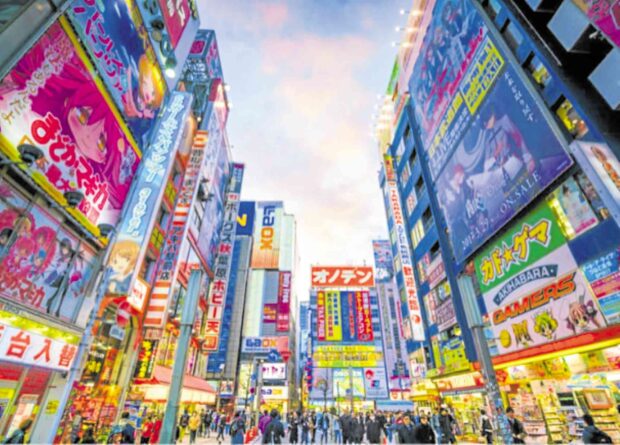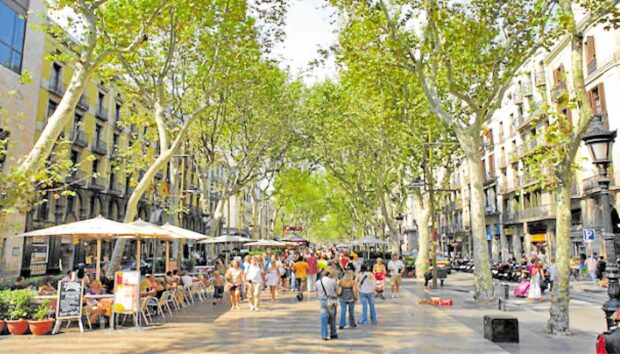Imagine visitors seeing your downtown for the first time. Walking down the main street, they take in the street scene—people strolling along the sidewalk, an electric jeepney stopping to pick up passengers, and interesting storefronts drawing in customers.
To many, these elements may seem commonplace. However, each represents a design choice and reflects a strategy to make the downtown or central business district (CBD) an inviting destination.
Sense of identity, place
Design gives a community a sense of identity and place. The physical characteristics of the CBD and its streets—the buildings and structures that make up the built environment, the infrastructure that facilitates the movement of people, the streetscape improvements that bring life to the streets—all contribute to what draws people to a place, inviting them to visit, set up shop, or call it home.
The answer is in the people themselves. When a community puts people first, good design follows.
People-centered design ensures that the physical elements of a place reflect the needs and desires of the community. It considers how people access a place and how individuals get around, whether it is accessible, and who feels welcome, and shapes the design around the answers to those questions. The process is deliberative and results in a CBD that enhances the overall quality of life.
Sustainable economic transformation
Successful CBDs have something in common: they have harnessed the power of community and leveraged existing assets to create sustainable economic transformation.
It reflects an approach that is rooted on the maxim that great places do not happen by chance. It is a locally-driven community revitalization effort that is comprehensive in scope, whereby people, projects and resources are aligned with place-specific strategies. Referred to as transformational strategies, these strategies are generated through meaningful community engagement and informed by analysis of the community’s market position. They serve as a guide and help to ground everything a CBD does.
Four areas
These strategies are implemented through comprehensive work in four broad areas.
Economic vitality focuses on capital, incentives and other economic and financial tools to assist new and existing businesses, catalyze property development, and create a supportive environment for the scores of entrepreneurs and innovators that drive local economies.
Well-designed and maintained public transport systems add to a city’s competitiveness. (HTTPS://CDCBUS.COM.AU)
Design supports a community’s transformation by enhancing the physical and visual elements of the CBD while capitalizing on the unique assets that set it apart.
Promotion positions the CBD as the center of the community and hub of economic activity, while creating a positive image that showcases the community’s unique characteristics.
Organization involves creating a strong foundation for a sustainable revitalization effort, including cultivating partnerships, community involvement, and resources for the community.
Transformed CBDs
An effective transformational strategy serves a particular customer segment, responds to an underserved market demand, or creates a differentiated destination. What that looks in practice is as different as the communities themselves.
Some transformed CBDs have distinguished themselves as entrepreneurial centers, while others are focused on creating family-friendly destinations. Some meanwhile are known as destinations for foodies. Every community has a distinct set of assets–physical, cultural, historical, natural, etc.–that makes them unique.
The formulation of development plans for an entire city or any of its districts, such as a CBD, is one of the mandated functions. The city planning and development office usually directs the preparation of local development plans, which typically consist of the following steps: assessing conditions; visioning process and statement; developing future scenarios; developing planning goals and strategies; and producing the final plan.
However, many if not most Philippine towns and cities do not put enough effort on analyzing the economic potentials and opportunities that are key to improving the quality of life of their constituencies.
The first step in creating attractive and inviting CBDs is a good assessment of the city’s economic DNA. This involves looking into the following:
(1) Physical conditions as they relate to the public realm such as the streets, sidewalks, and public spaces, privately owned buildings and structures; and access, such as transportation infrastructure. All these are critical to attracting customers;
(2) Business conditions as they relate to nodes of business density, existing tenant mix, and the real estate environment, all of which help assess the relative health of the CBD and determine the size of the CBD’s trade area;
(3) Market demand to determine both size and scale of both the residential and non-residential (i.e., employee and visitor) customer base; and
(4) Administrative capacity that considers not just the organizational and leadership capacity to advance CBD initiatives, but also the underlying regulatory and policy frameworks that define and drive CBD investment.
Designing for people is the key to an attractive and dynamic central business district. (HTTPS://STATIC1.SQUARESPACE.COM)
A good masterplan can explore ways to accommodate growth and new economic activities in the CBD before inappropriate or sprawl development threaten to undermine the city’s potentials.
By including guidelines for a wide range of physical improvements, the city can create a consistent and unified approach to maintaining and improving the various physical elements of the CBD and beyond.
Engaging with other local stakeholders in this masterplanning process will help develop a more complete understanding of potential economic development strategies available, including those for addressing business recruitment and retention, appropriate new land uses, and incentives and finance mechanisms that encourage investment and lay the groundwork for the city’s continued success.
The author is a Fellow of the United Architects of the Philippines (UAP) and the Philippine Institute of Environmental Planners (PIEP), and the Principal Urban Planner of CONCEP Inc.



